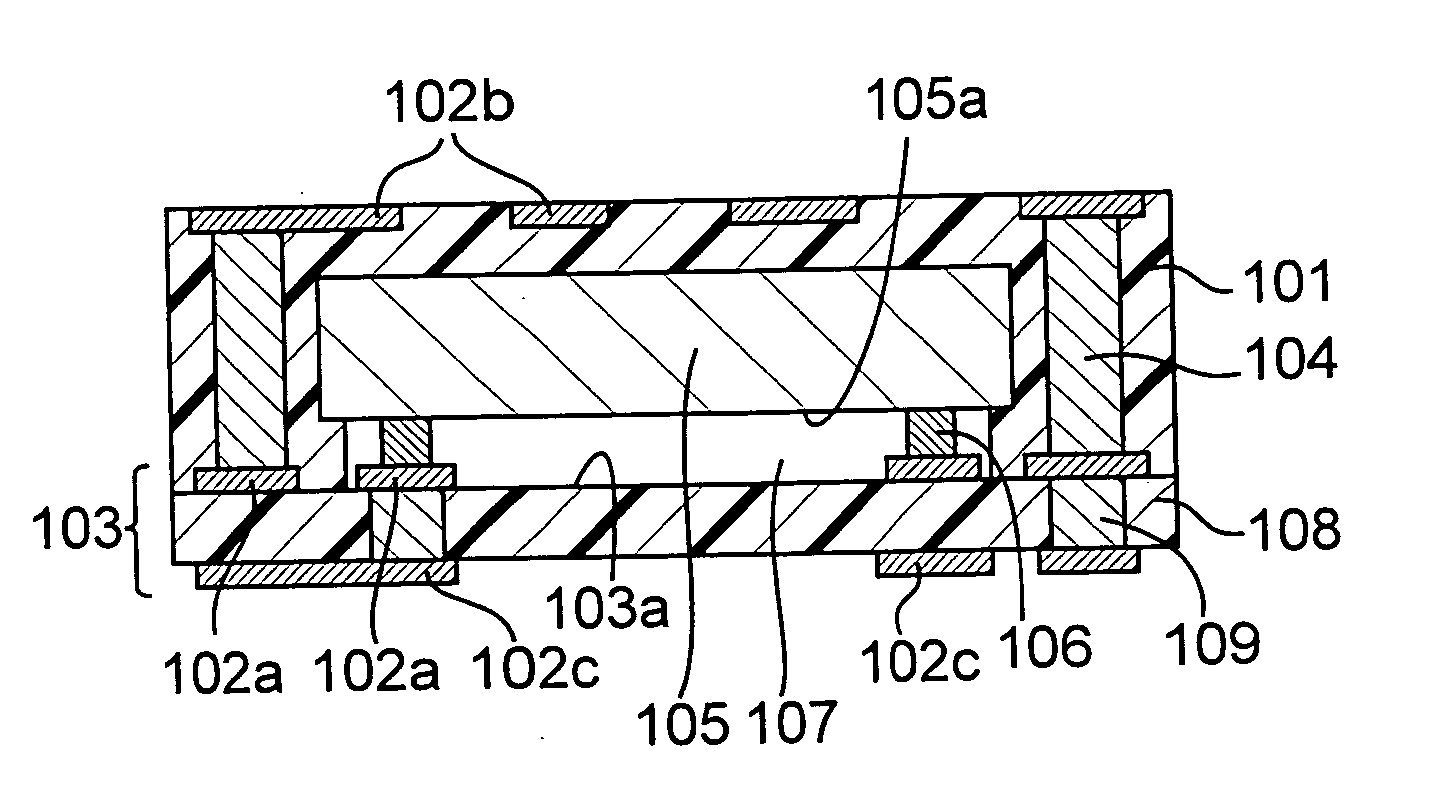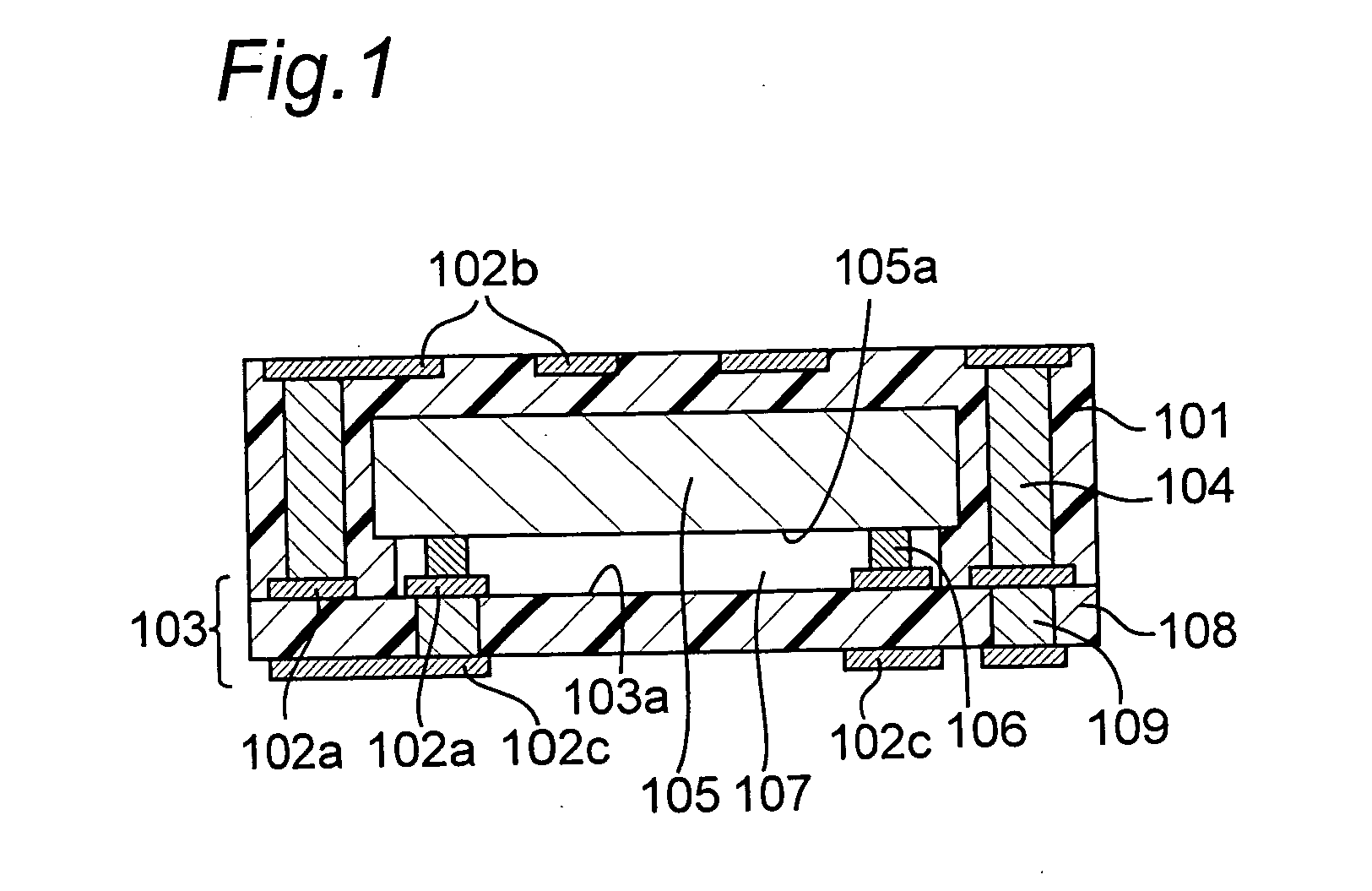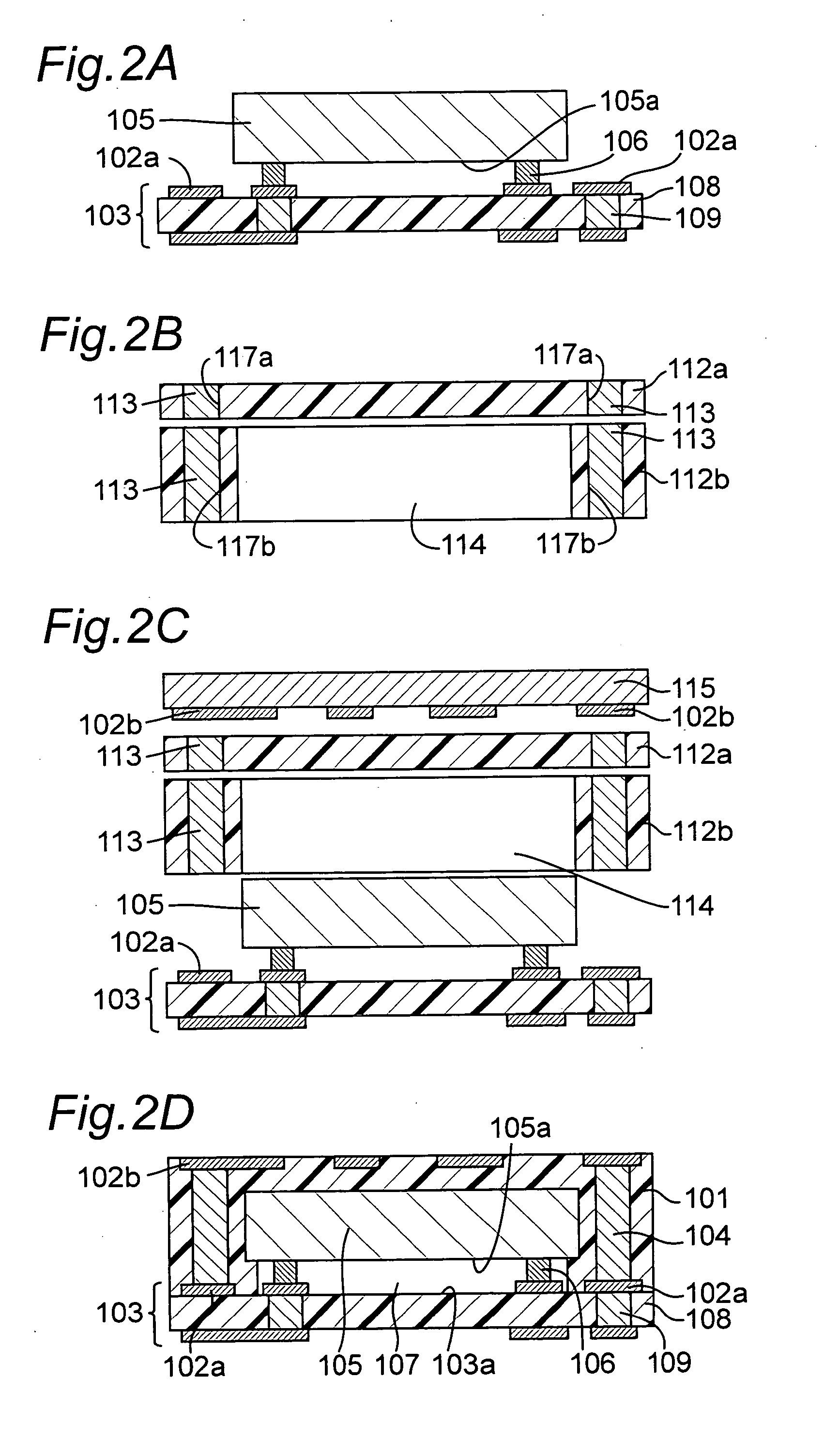Module with a built-in semiconductor and method for producing the same
a technology of built-in semiconductors and modules, which is applied in the association of printed circuit non-printed electric components, dielectric characteristics, radiation controlled devices, etc., can solve the problems of inferior connection between wiring layers, passive components cannot be disposed on the overrunning portion of sealing resin, and the inner via cannot be disposed at a place, etc., to achieve the effect of convenient filling with conductive resin
- Summary
- Abstract
- Description
- Claims
- Application Information
AI Technical Summary
Benefits of technology
Problems solved by technology
Method used
Image
Examples
example 1
[0164] In Example 1, a module with a built-in semiconductor according to Embodiment 1 was produced according to the following procedures (i) to (iii)
[0165] (i) Manufacturing of Electrically Insulating Substrate
[0166] An electrically insulating substrate was prepared by forming a sheet member from a mixture of an inorganic filler and a thermosetting resin and then forming through bores and filling the bores with a conductive paste. The materials for the sheet member was prepared by charging the inorganic filler, the thermosetting resin and optionally a solvent for adjusting a viscosity into a container having a predetermined volume, and then rotating the container itself and revolving it by means of an agitator. This mixing (or agitation) method makes the inorganic filler dispersed sufficiently (that is, gives a uniform dispersion), even if the mixture has a relative high viscosity. In this example, a mixture of 10 wt % an epoxy resin as the thermosetting resin (including a curing ...
example 2
[0180] In Example 2, a module with a built-in semiconductor of Embodiment 3 was produced. In Example 2, a module was produced by manufacturing, in the same manner as in Example 1, a laminate which consisted of a circuit board with a mounted semiconductor device, two electrically insulating substrates and a mold release film having a wiring layer, and heating and pressurizing the laminate at 120° C. and 1 MPa for 5 minutes and then at 180° C. and 1 MPa for one hour. 120° C. is a temperature in a range of TL+20° C. wherein TL is a temperature at which a thermosetting resin contained in the electrically insulating substrate indicates the lowest melt viscosity. During heating at 120° C., the viscosity of the thermosetting resin which was contained in the electrically insulating substrate declined and the resin was fluidized. Therefore, during the lower temperature heating, the material of the electrically insulating substrate flowed, and surrounded and sealed the protruding electrodes. ...
PUM
 Login to View More
Login to View More Abstract
Description
Claims
Application Information
 Login to View More
Login to View More - R&D
- Intellectual Property
- Life Sciences
- Materials
- Tech Scout
- Unparalleled Data Quality
- Higher Quality Content
- 60% Fewer Hallucinations
Browse by: Latest US Patents, China's latest patents, Technical Efficacy Thesaurus, Application Domain, Technology Topic, Popular Technical Reports.
© 2025 PatSnap. All rights reserved.Legal|Privacy policy|Modern Slavery Act Transparency Statement|Sitemap|About US| Contact US: help@patsnap.com



